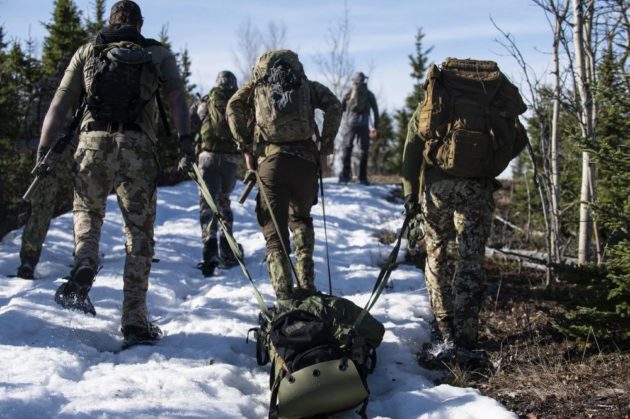Story by Chief Petty Officer Paolo Bayas and Chief Petty Officer Eric Chan
Naval Special Warfare Group ONE
Earlier this summer, West-Coast-based SEAL Team platoons used the Deploy-for-Purpose model to innovate simultaneously with new equipment and tactics to meet new threats and expand the United States’ national advantage in strategic competition.
“This is how we innovate for step changes and stay ahead of our peer competitors,” said Rear Adm. H. Wyman Howard III, commander, Naval Special Warfare Command. “Previously, a SEAL Team would complete their Operational Readiness Cycle and certification for combat readiness, and then we would allocate the full capability through joint commander and department decisions & authorities. With DfP, we retain a third of these combat-ready forces to experiment with new equipment and innovate new tactics, techniques, and procedures for the high-end fight – learn faster at lower training risk because we’re conducting this experimentation and concept development with combat-ready forces.”
SEALs and combat service support personnel traveled to southwest Florida to test several different pieces of underwater propulsion and navigation equipment across the spectrum of NSW dive operations.
Combat diving is a core mission set of the original Frogmen and remains a distinctive capability to the NSW mission today for access. With modern technology and digital navigation equipment, SEALs can travel longer distances, faster, while being better able to avoid detection.
“We’re bringing combat swimmer capabilities into the digital age,” said one special operator. “It’s like the difference between using a rotary dial phone compared to using a smartphone.”
The experimentation started with classroom sessions on programming and maintenance lessons for each piece of equipment. Once in the water, the special operators familiarized themselves with the equipment and practiced basic tactics, techniques, and procedures. They perfected the basics, then iterated on longer and more complex dives. The exercise culminated with the operators practicing different mission profiles with the new equipment.
While that platoon was innovating beneath the surface of the Atlantic, another platoon from the same SEAL Team was practicing for combat in the harsh environment of the Arctic High North.
These SEALs and combat support personnel participated in Red Flag-Alaska, a Pacific Air Forces-sponsored joint, multinational exercise involving multiple services and platforms, all coordinated in a realistic combat scenario. The platoon developed and tested new tactics in a simulated extreme threat environment.
Capt. David Abernathy, commander, Naval Special Warfare Group 1, said the DfP model is a way to increase readiness.
“The strategic advantage of the Deploy-for-Purpose model is that it allows us to learn faster,” said Abernathy. “Those lessons learned are going to allow us to solve problems we weren’t able to see under our previous force design. We can already see increased capability because of the new flexibility Deploy-for-Purpose brings.”
Howard said he hopes to see DfP setting the pace for innovation in Naval Special Warfare and beyond.
“This is completely different from how NSW has operated in the past, and it is a way to prioritize missions that only maritime special operators can do,” said Howard. “This model allows us to rapidly innovate – build a little, test a little, and learn a lot – on a small level, experiment, and scale those lessons and successes to mitigate political, strategic and military risk on mission imperatives.”
https://www.dvidshub.net/news/425343/naval-special-warfare-pivots-new-deploy-purpose-model


Leave a Reply
You must be logged in to post a comment.